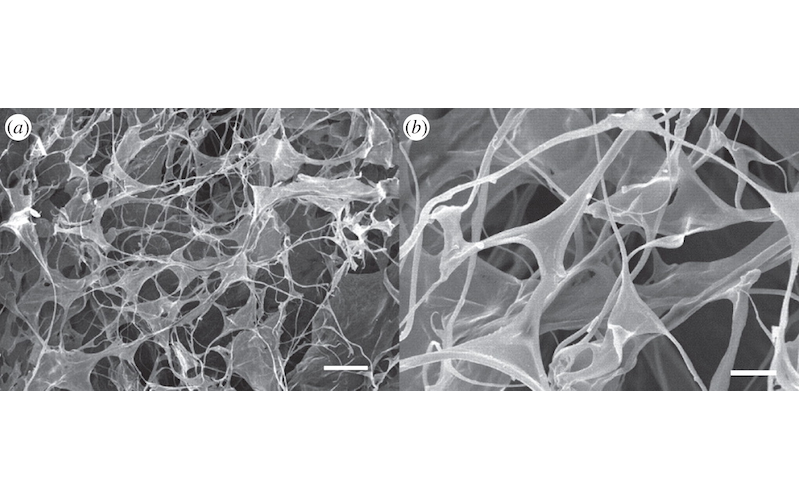
The body-wide signalling network is made up of collagen embedded with mechanosensitive fibroblasts – both elements are adjustive-receptive. Biotensegrity enables this network to regulate tension and compression. Biotensegrity has a fractal like architecture – which repeats in a self-similar manner from the molecular and cellular scale up to the scale of macroscopic anatomical tissues. In addition to being adjustive-receptive to mechanical deformation, this body-wide signalling network is responsive to the chemical and hormonal milieux of the organism and is influenced by the autonomic and somatic nervous systems.
The integrity of body-wide signalling is influenced by the adaptive material properties of the ECM and the responsiveness and health of the whole organism, across all systems and scales. For this reason some have ascribed the term meta-system to the the body-wide signalling network. Turvey & Fonseca employ the term multifractal tensegrity to denote a similar concept and suggest a re-envisioning of the body as a materially continuous tensional unity which incorporates Muscular, Connective tissue and Skeletal system or MCS.
In their paper ‘The Medium of Haptic Perception: A Tensegrity Hypothesis’ (2014), Turvey & Fonseca start with the analogy of the cell – specifically the fibroblast – and argue that the cell is a ‘minimal haptic perceptual system’. The authors start here because:
‘fibroblasts share with the human the haptic activities of dynamic or effortful touching to negotiate and manipulate its microenvironment during migration—activities such as pushing, pulling, probing, prodding, bending, stretching, and tugging’.
As you may recall, cells contain a dynamic mechanoresponsive scaffold called the cytoskeleton. The authors describe how the cell is mechanically linked and continuous with its environment. This continuity is achieved through cytoskeletal extensions through the cell wall and into the surrounding extracellular matrix, and beyond into connective tissue and fascia, which permeate the entire body. These elements or specialised tissues have various properties. Collectively they enable smooth movement between interconnected elements, the flow of muscular force, long range connectivity, force propagation and also maintain suitable levels of pre-tension.
CELLULAR TUNING INSIDE THE HAPTIC MEDIUM
In addition to highly responsive fibroblasts, the haptic medium is populated by a wide range of cells which have been shown to be regulated by mechanical forces. Muscle, bone and lymphatic tissues are composed of mechanoresponsive cells which respond to mechanical forces over a wide range of time scales.
Furthermore, the haptic medium is permeated by various types of specialised free-nerve endings called mechanoreceptors. Mechanoresponsive cells and mechanoreceptors are embedded in the haptic medium, this means that mechanical deformation informs and perhaps even tunes the responsiveness of the entire system.
The haptic medium is like a superconductor which rapidly transmits mechanical information. Transmission of mechanical information through the haptic medium is far quicker and more direct than the nervous system. As such, activation of mechanoreceptors occurs in the wake of haptic transmission. The haptic wave of mechanical information tunes the ECM in which mechanoreceptors are embedded.
This material tuning of the haptic medium, alters the activation thresholds of mechanoreceptors as well as adjusting ECM pre-tension. The adjustive-receptive qualities of the haptic medium may be vital for preventing tissue injury – by calibrating mechanoreceptor sensitivity and ECM pre-tension to the magnitude of imminent mechanical energy. From a fractal perspective we might say that these mechanosensitive elements are nested inside the haptic medium. This nested relationship means that our neurobiological and cellular selves are embedded with our material self.
FEATURED IMAGE:
Scanning electron micrograph of extracellular matrix scaffold. Unknown origin.
